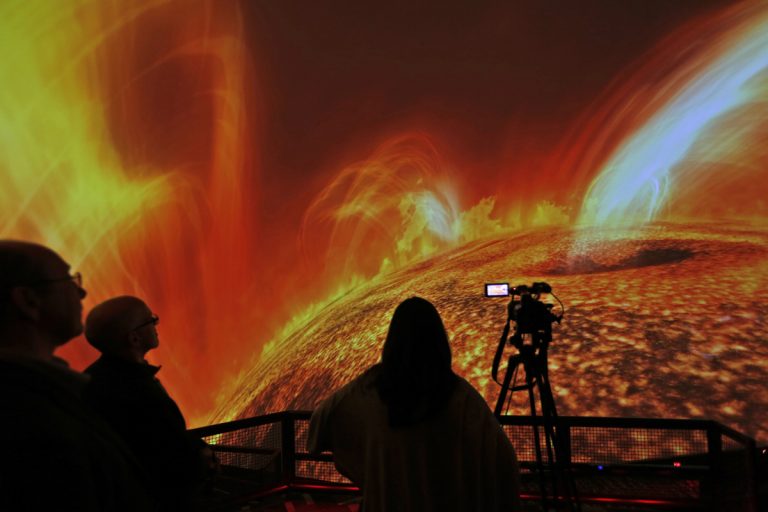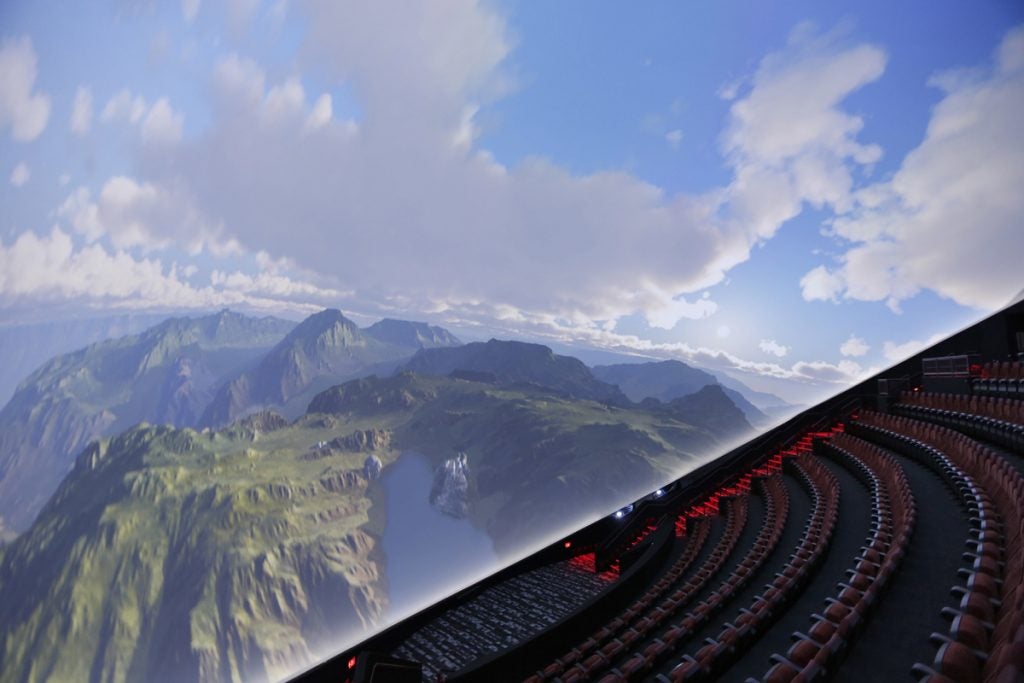New planetarium seeks to put New Jersey science center on travel map
New Jersey's Liberty Science Center in Jersey City is aiming to take visitors into space in what they are billing as the largest planetarium in the Western Hemisphere.

In this Wednesday, Dec. 6, 2017 photo, people watch interstellar bodies move through space during a media preview at the planetarium at Liberty Science Center in Jersey City, N.J. The newly refurbished planetarium is the largest in the western hemisphere and uses ten advanced projectors to produce an 8K resolution. It opens to the public on Saturday, Dec. 9, 2017. (Seth Wenig/AP Photo)
New Jersey’s Liberty Science Center in Jersey City is aiming to take visitors into space in what they are billing as the largest planetarium in the Western Hemisphere.
The Jennifer Chalsty Planetarium, which opened Saturday just across the Hudson River from New York City, features a dome that is 89 feet (27 meters) in diameter, surpassing a 79-foot (24-meter) dome in St. Louis.
Chief executive Paul Hoffman says he believes the $5 million planetarium will turn the Liberty Science Center into a travel destination.
After having difficulty finding films for its Imax film system, which it had featured since opening 24 years ago, the Liberty Science Center decided to pursue the construction of a new planetarium.
“The world was going digital,” said Hoffman.
Instead of creating a digital theater, the center decided to construct a planetarium.
A 10-projector 8K resolution system will project images on 588 aluminum panels that are seamlessly joined.
Hoffman plans to partner with astronomers and observatories to hold video conferences using the planetarium’s huge screen.
The center has partnered with the Space Telescope Science Institute to premiere a high-definition visualization of the Orion Nebula based on the Hubble telescope’s findings.
“Inside this vast world of gas and dust, so distant that even its light takes 1,400 years to reach our eyes, we see star and planet formation in more beauty and detail than in any other place in the cosmos,” Hoffman said.
A database of images is continually updated.

The idea of using a planetarium to illustrate space travel wasn’t done in the beginning, said space history curator David DeVorkin, of the Smithsonian Air & Space Museum in Washington.
The Hayden Planetarium in New York City started playing with the idea after World War II, but it wasn’t until the Soviet Union had launched Sputnik and the space race began in the 1960s that the number of planetariums expanded throughout the country.
There have been teaching devices to help orient humans in time and space since ancient times. But the first modern planetarium, with stars projected on a dome, did not evolve until the early 1920s.
“They bring heaven down to earth,” DeVorkin said, as digital technology has changed the total experience.
Follow Marsh on Twitter at https://www.twitter.com/smarshAP.
WHYY is your source for fact-based, in-depth journalism and information. As a nonprofit organization, we rely on financial support from readers like you. Please give today.



